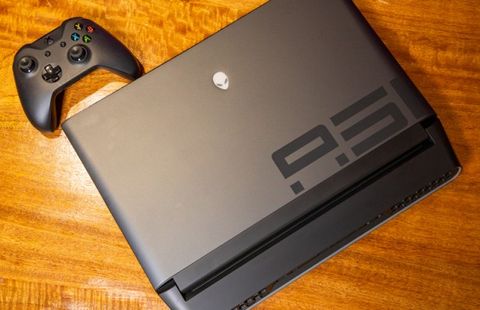It looks like we have got a real slobber knocker on our fingers. We’ve got the MSI GT75 Titan in one corner, a beast of a gaming pc sporting an overclockable Intel Core i9 CPU and an Nvidia RTX 2080 GPU, an appropriate 4K display, and unbelievable audio — it is the final multimedia gadget. And in the other corner, we’ve got the Alienware Area-51m, a redesigned beauty that the company calls its first true desktop replacement. It also has an RTX 2080 GPU, a desktop processor, an eye tracker, and a host of other goodies. And while both of these machines are über-powerful with a host of new features, only one system can reign supreme. Read on to find out which.
| Alienware Area-51m | MSI GT75 Titan | |
| Starting Price (as configured) | $2,549 ($5,099) | $2,199 ($4,199) |
| CPU | 3.6-GHz Intel Core i9-9900K CPU | 2.9-GHz Intel Core i9-8950HK CPU |
| RAM | 64GB | 32GB |
| Storage | Dual 1TB NVMe PCIe SSDs RAID 0 configuration | 512GB NVMe PCIe SSD |
| GPU | Nvidia GeForce RTX 2080/ Intel UHD Graphics 630 | Nvidia GeForce RTX 2080 |
| Key Travel/Actuation | 2.2 millimeters, 71 grams | 2.5 millimeters, 80 grams |
| Display | 17.3 inches, 1920 x 1080, Nvidia G-Sync 144 Hertz | 17.3 inches, 3840 x 2160, Nvidia G-Sync 60 Hertz |
| Battery Life (hrs:mins) | 2:36 | 2:20 |
| Size | 16.1 x 15.9 x 1.2~1.7 inches | 16.9 x 12.4 x 1.2~2.3 inches |
| Weight | 8.5 pounds | 10.1 pounds |
Design
The Titan lives up to its name in sheer bulk. Weighing 10.1 pounds, the laptop’s 16.9 x 12.4 x 1.2~2.3-inch frame cuts an imposing figure. Although the laptop has gotten a few design updates, namely, the blood-red accents along the lid and the revamped dragon sigil, MSI has kept true to its design language. Constructed primarily of black-brushed aluminum, the Titan looks every bit like a gaming laptop –– and a powerful one at that.

The Area-51m is a whole new look for Alienware. Its new design language, Legend, is a sleeker, more sophisticated take on the intergalactic theme. Gone are the sharp angles and overabundance of light strips. Instead, the laptop is all about rounded corners, silky-soft touch paint, and honeycomb vents.
But if you think Alienware ditched the light show altogether, you’d be mistaken. The company has taken a more conservative approach to RGB lighting, but the lights are still there on the alien head and the rear vents, waiting for you to configure them to your heart’s desire. And despite its classification as a desktop replacement, the Area-51m is lighter than the MSI at 8.5 pounds, 16.1 x 15.9 x 1.2~1.7 inches. The lighter frame is due in large part to Alienware switching from anodized aluminum to magnesium alloy. Overall, the Area-51m has a more appealing look.
Display
Both the Area-51m and the Titan have captivating displays, but one clearly has the edge. The Area-51m has a 17.3-inch, 1920 x 1080, Nvidia G-Sync display with a 144-Hertz refresh rate. It also has some of the thinnest bezels I’ve seen on a desktop replacement. When I watched the trailer for Little, I was very impressed with the electric blue color, and other hues such as emerald, magenta, and gold were gorgeous. The same color quality carried over to gaming, as the vistas were devastatingly beautiful.
But not so fast, — the Titan is just as beautiful, if not even more so. Whether gaming, watching movies or writing an article, the Titan’s 17.3-inch, 4K screen produced sharp detail and jaw-dropping color on a seriously bright panel. Details were so clear that I could see the individual curls of Issa Rae’s dark-brown hair during the Little trailer. And when I was playing Battlefield V, the colors on the Nvidia G-Sync panel (60 Hz, 3 milliseconds) were so pretty; it made me take stock of the mud in the game.
When we measured color reproduction, the Alienware produced 117.5 percent of the sRGB gamut, while the Titan reached an incredible 178 percent. However, the Area-51m has the brighter panel, averaging 284 nits, outshining the Titan’s 271 nits.





































